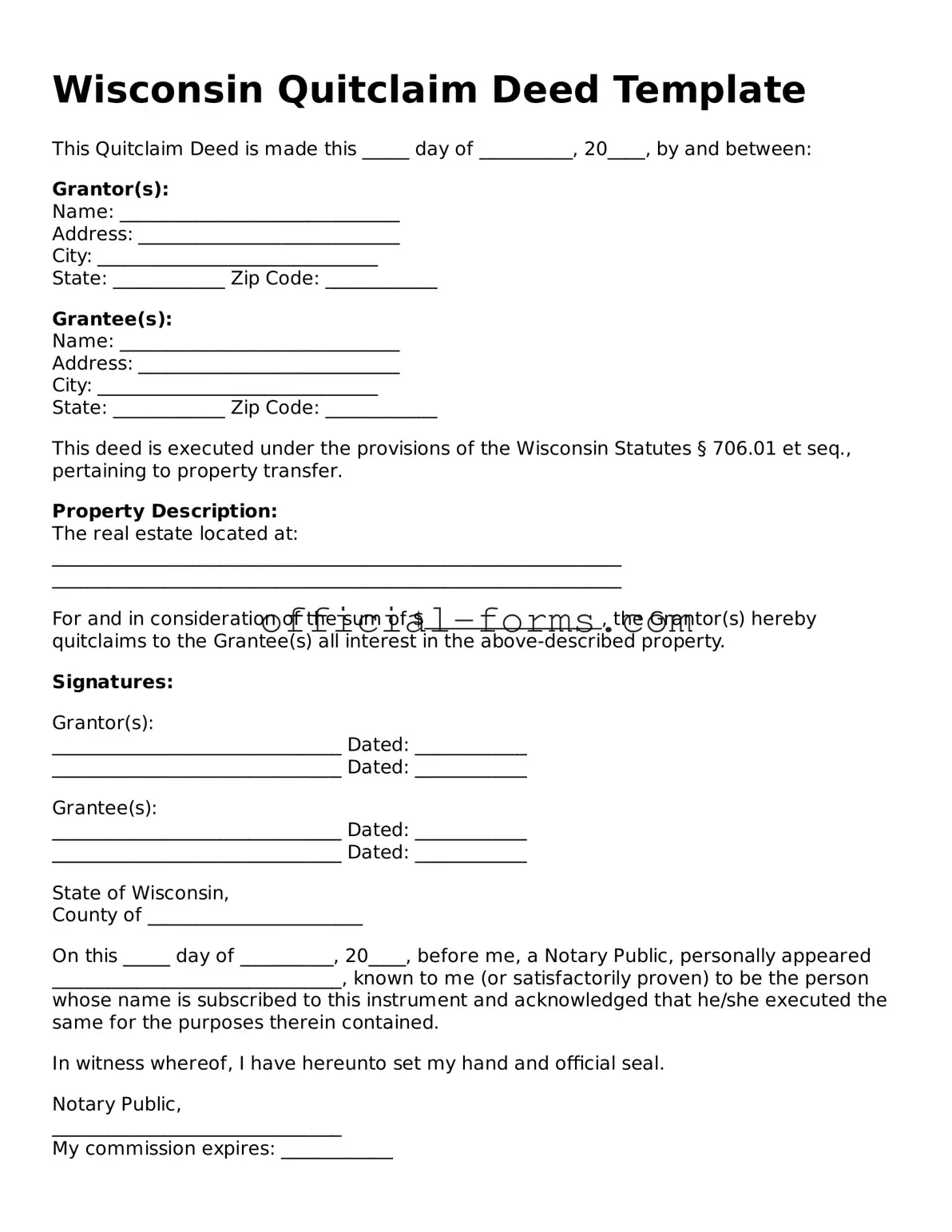Filling out a Wisconsin Quitclaim Deed form can seem straightforward, but many individuals make common mistakes that can lead to complications down the line. One frequent error is failing to include the correct names of the parties involved. It is essential to ensure that both the grantor (the person transferring the property) and the grantee (the person receiving the property) are accurately named. Omissions or misspellings can create confusion and may invalidate the deed.
Another mistake is neglecting to provide a complete legal description of the property. The legal description should be detailed enough to clearly identify the property being transferred. Vague descriptions can lead to disputes over what exactly is being conveyed, so it’s important to reference the property's boundaries accurately, often found in previous deeds or property tax documents.
People often overlook the requirement for signatures. Both the grantor and any witnesses must sign the deed. In Wisconsin, a notary public must also acknowledge the signatures. Failing to secure the necessary signatures or not having them notarized can render the deed unenforceable.
Additionally, some individuals forget to include the date of the transfer. While it may seem minor, the date is crucial for establishing the timeline of ownership and can affect legal rights. Without a date, it may be challenging to determine when the transfer took place, leading to potential legal issues.
Another common oversight is not paying attention to the recording requirements. After completing the Quitclaim Deed, it must be filed with the county register of deeds. Neglecting to record the deed can result in problems regarding the public notice of the transfer, which is essential for protecting the new owner's rights.
Improperly calculating transfer fees is another pitfall. Wisconsin requires a fee based on the value of the property being transferred. Failing to pay the correct amount can delay the recording process or result in additional penalties.
People sometimes forget to check for existing liens or encumbrances on the property. Before transferring ownership, it’s wise to ensure there are no outstanding debts tied to the property. If a property has liens, the new owner may inherit these financial obligations, leading to unexpected liabilities.
Another mistake is using outdated forms. Laws and requirements can change, and using an old version of the Quitclaim Deed form may not comply with current regulations. Always ensure you have the most recent form to avoid unnecessary complications.
Finally, individuals may fail to seek legal advice when needed. While it is possible to fill out the Quitclaim Deed independently, consulting with a legal professional can provide valuable insights and help avoid costly mistakes. Taking the time to review the form with an expert can save headaches in the future.
